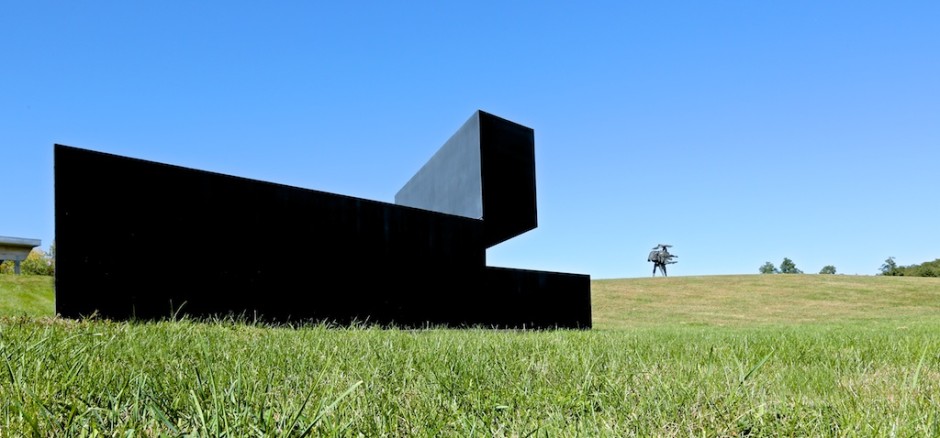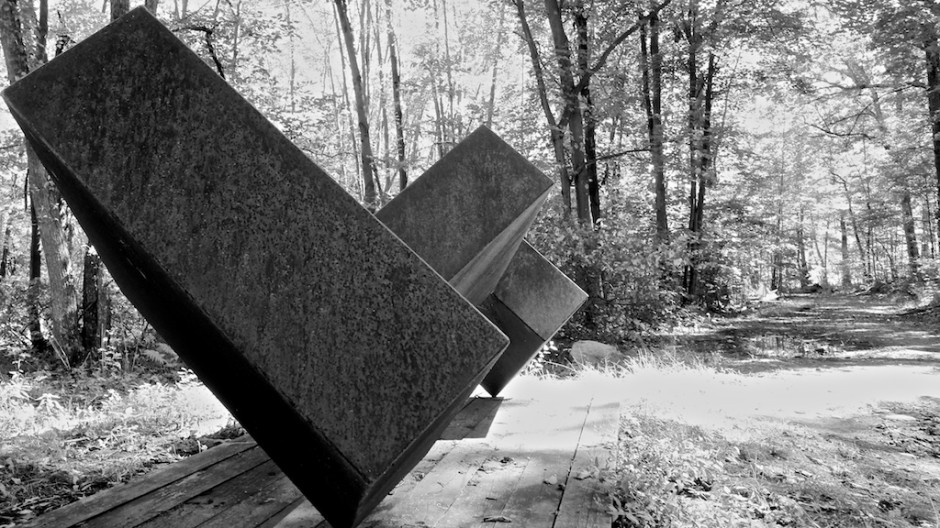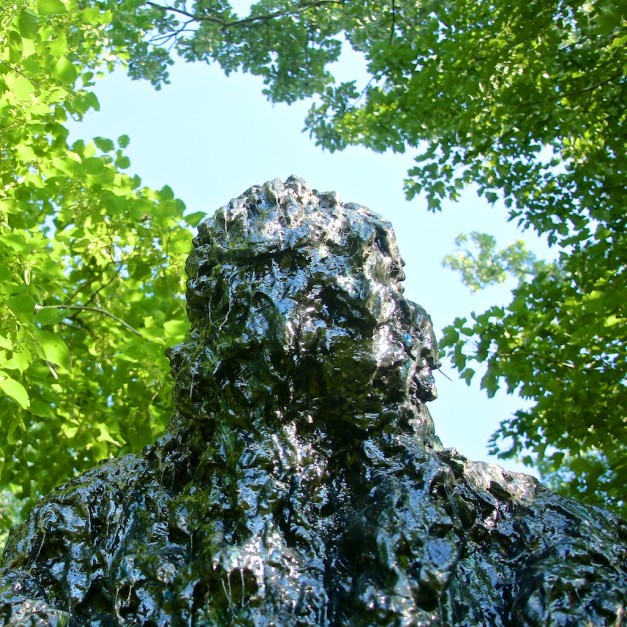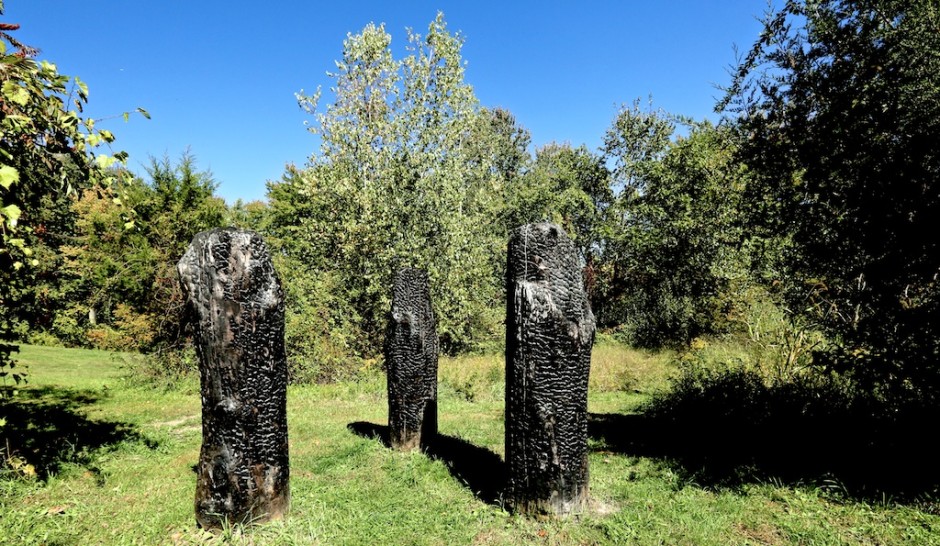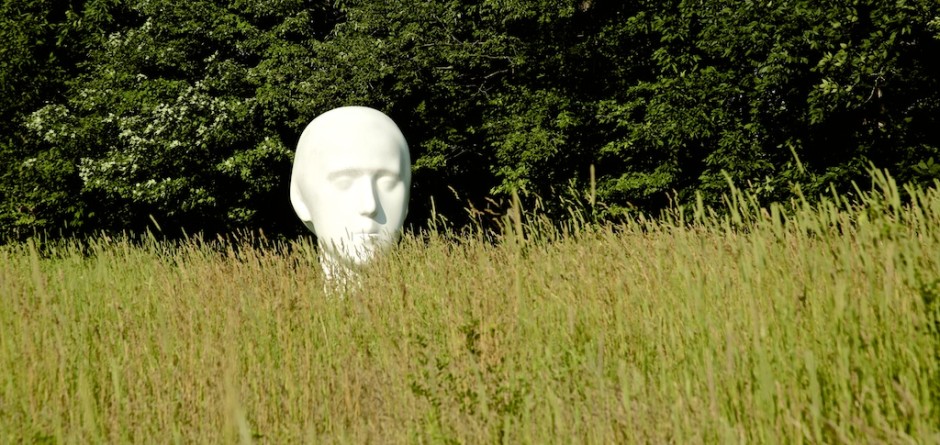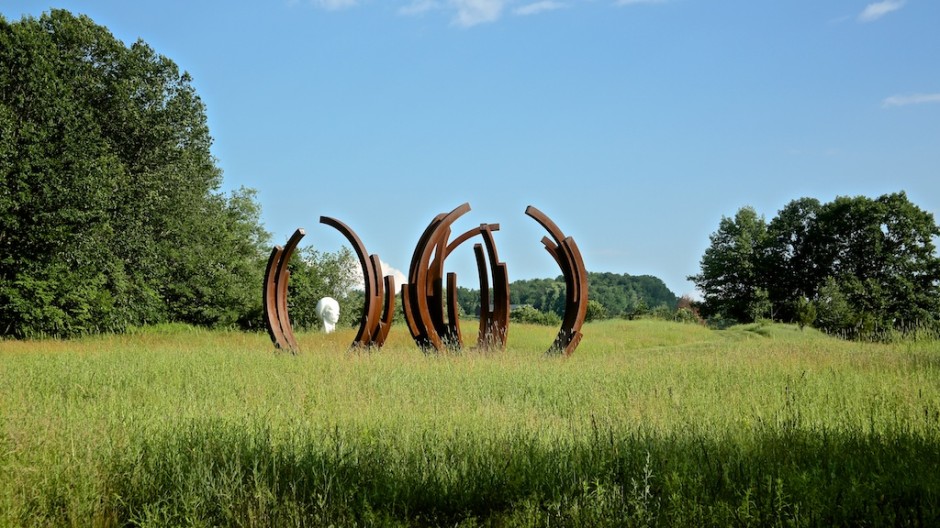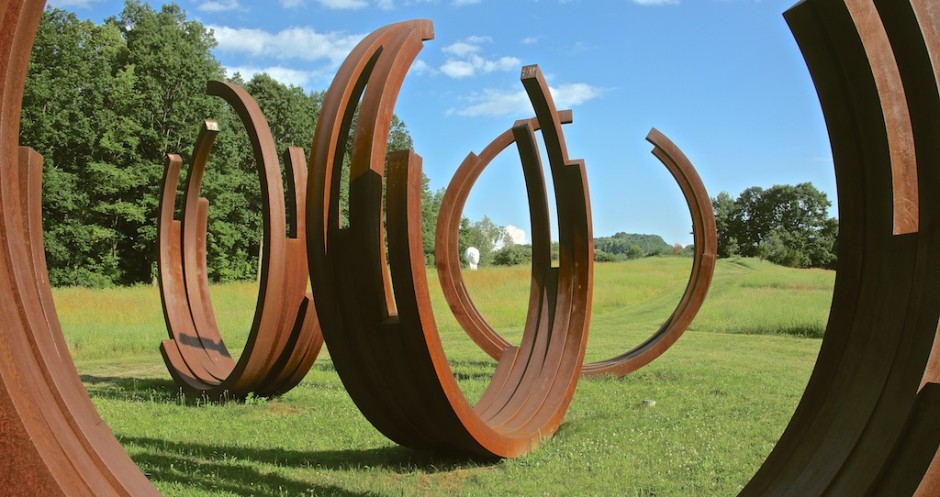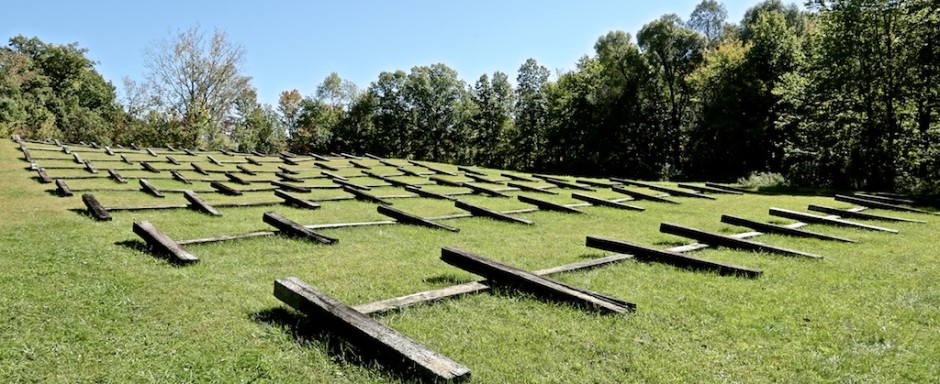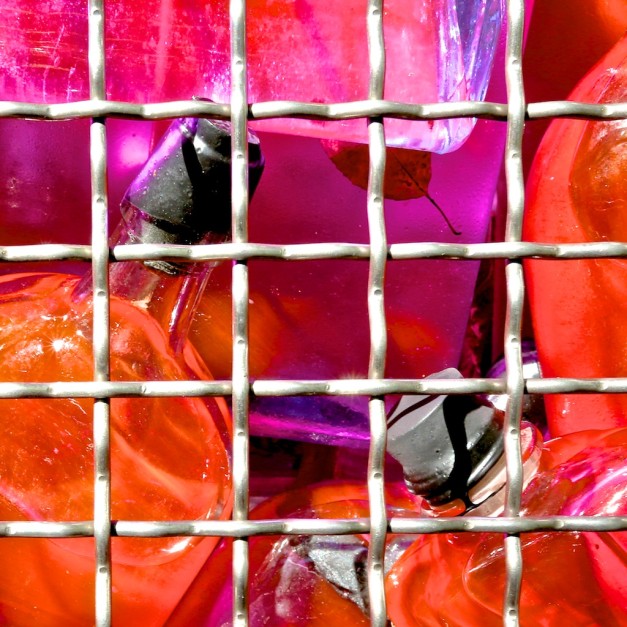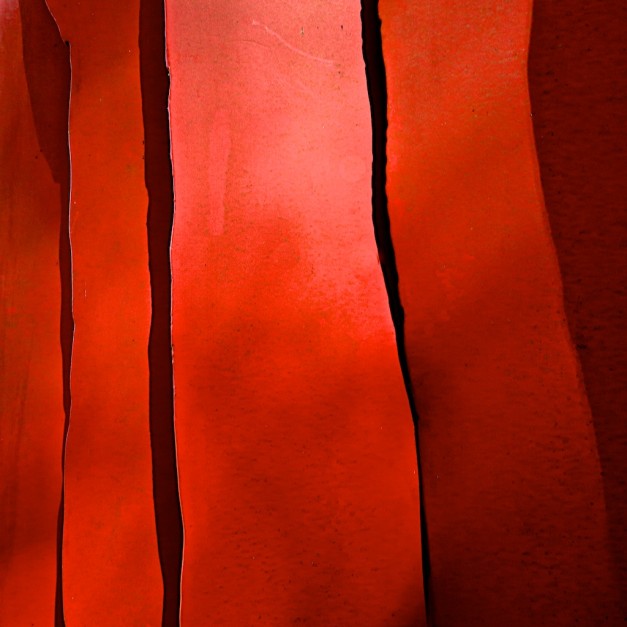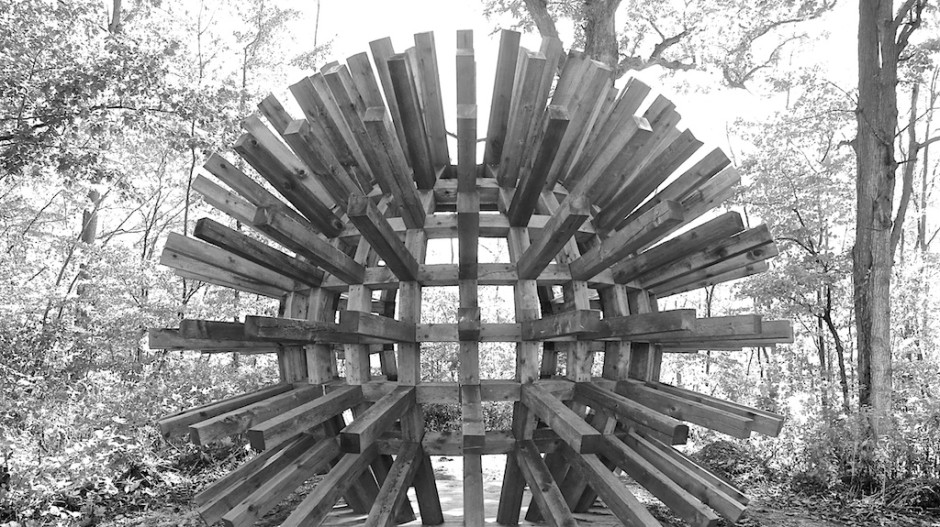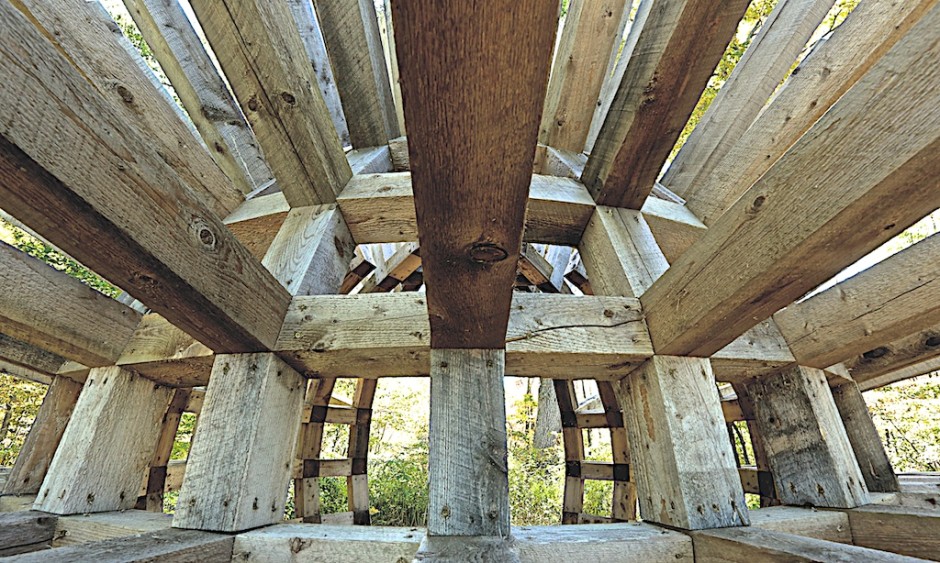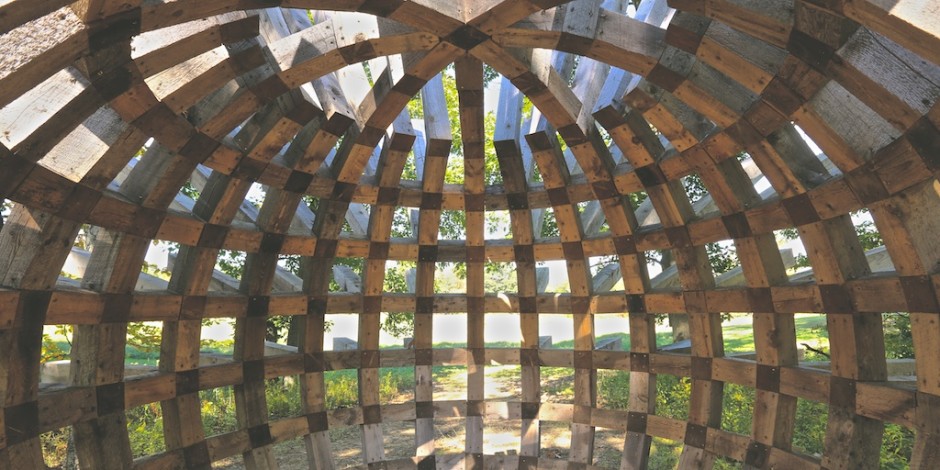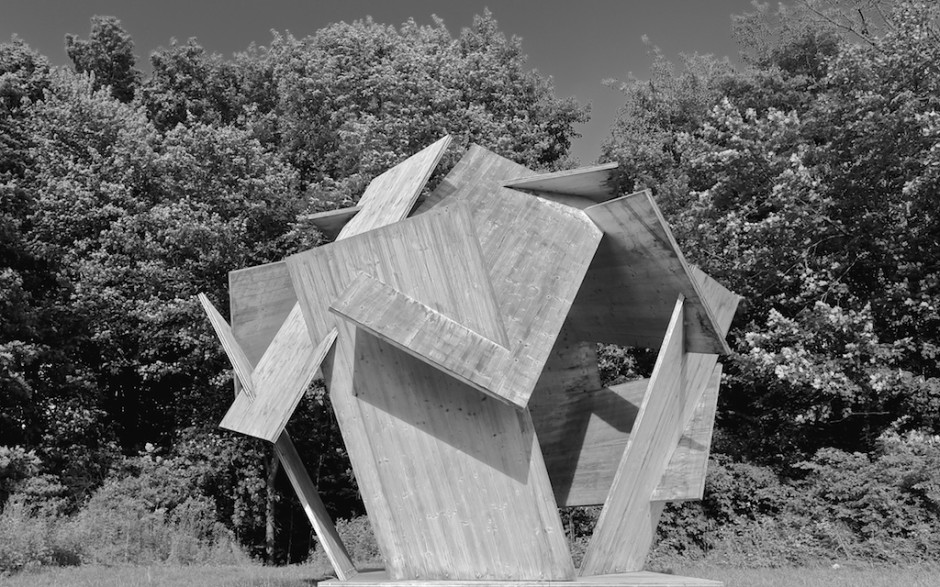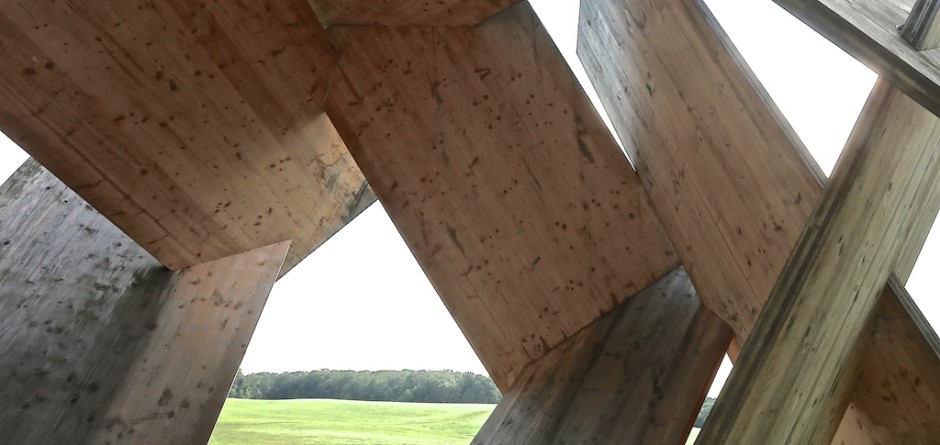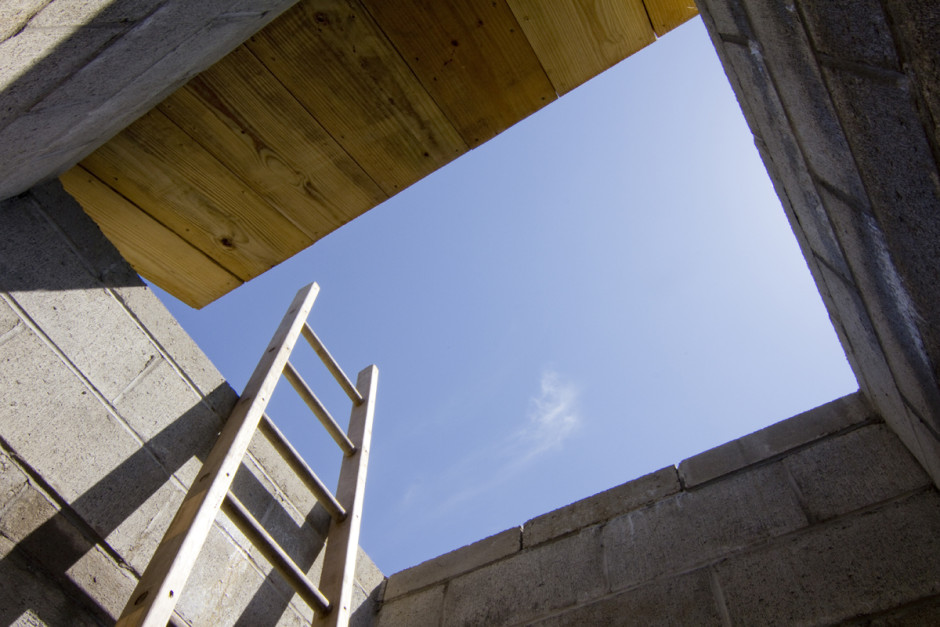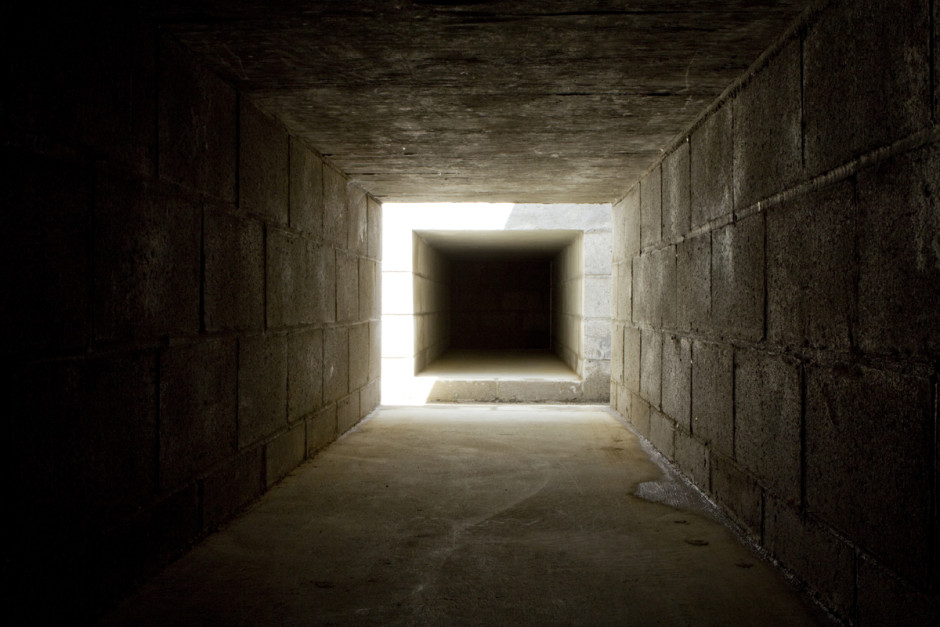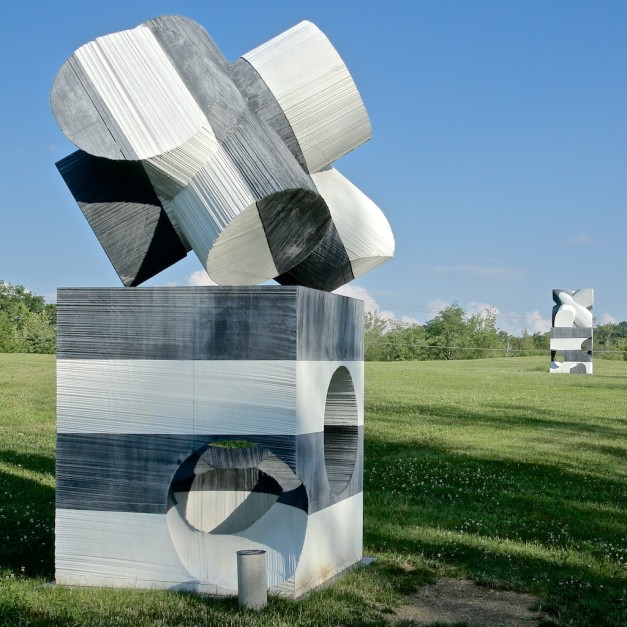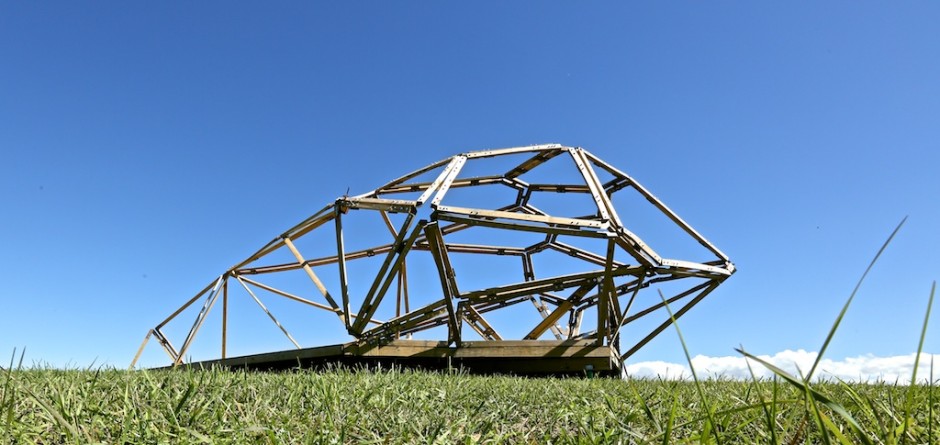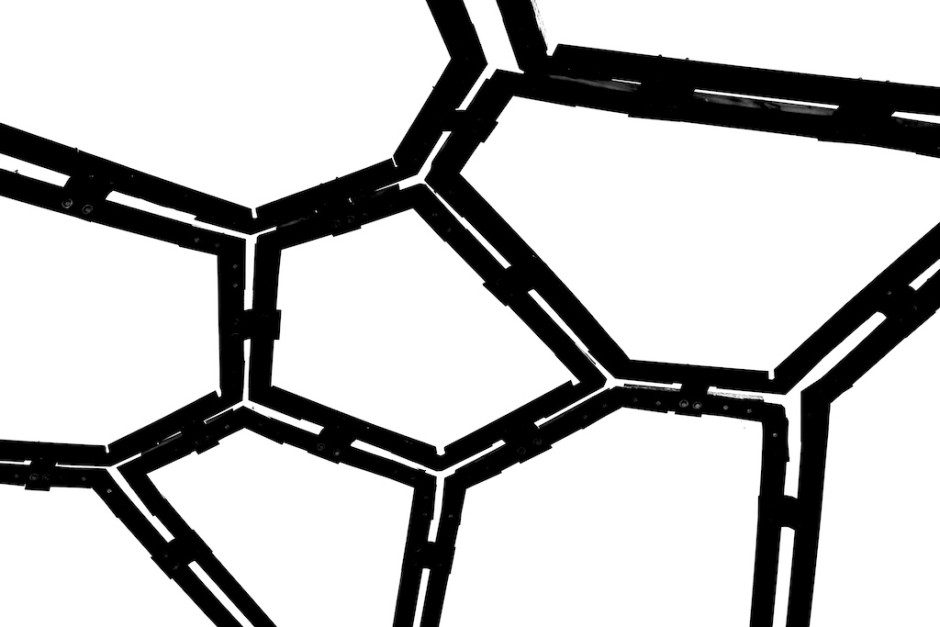OMI INTERNATIONAL ARTS CENTER
GHENT/HUDSON VALLEY





Iran do Espírito Santo, Playground, 2013. 13’6″ x 13’6″ x 13’6″ pigmented cast concrete.
~~~~~~~~~~~~~~~~~~~~~~~~~~~~~~~~~~~~~~~~~~~~

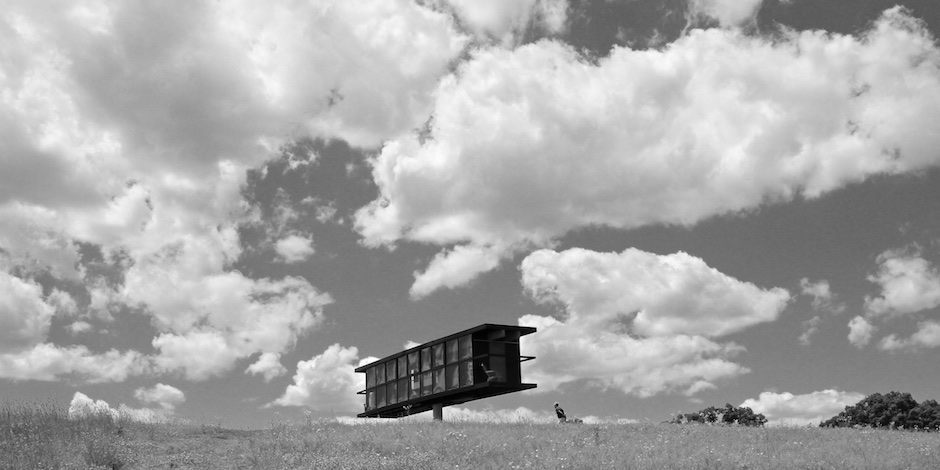
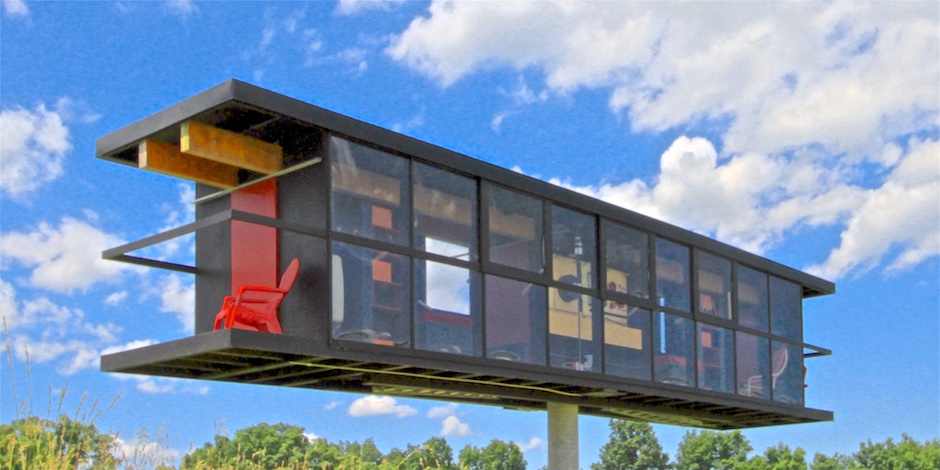
Alex Schweder + Ward Shelley, ReActor, 2016, Wood and concrete, 16’x44’x8′
~~~~~~~~~~~~~~~~~~~~~~~~~~~~~~~~~~~~~~~~~~~~

Donald Baechler, Walking Figure, 2003-4
~~~~~~~~~~~~~~~~~~~~~~~~~~~~~~~~~~~~~~~~~~~~
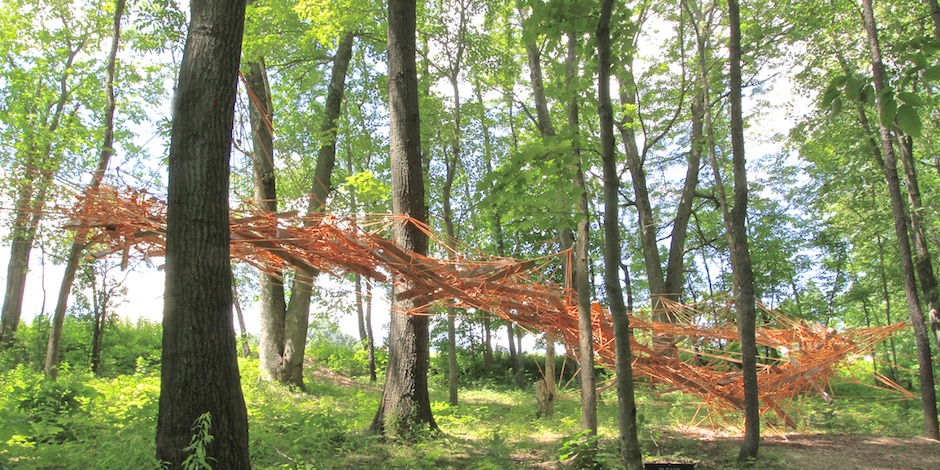
Andreas Savva, Oval Frontiers, 2016
~~~~~~~~~~~~~~~~~~~~~~~~~~~~~~~~~~~~~~~~~~~~
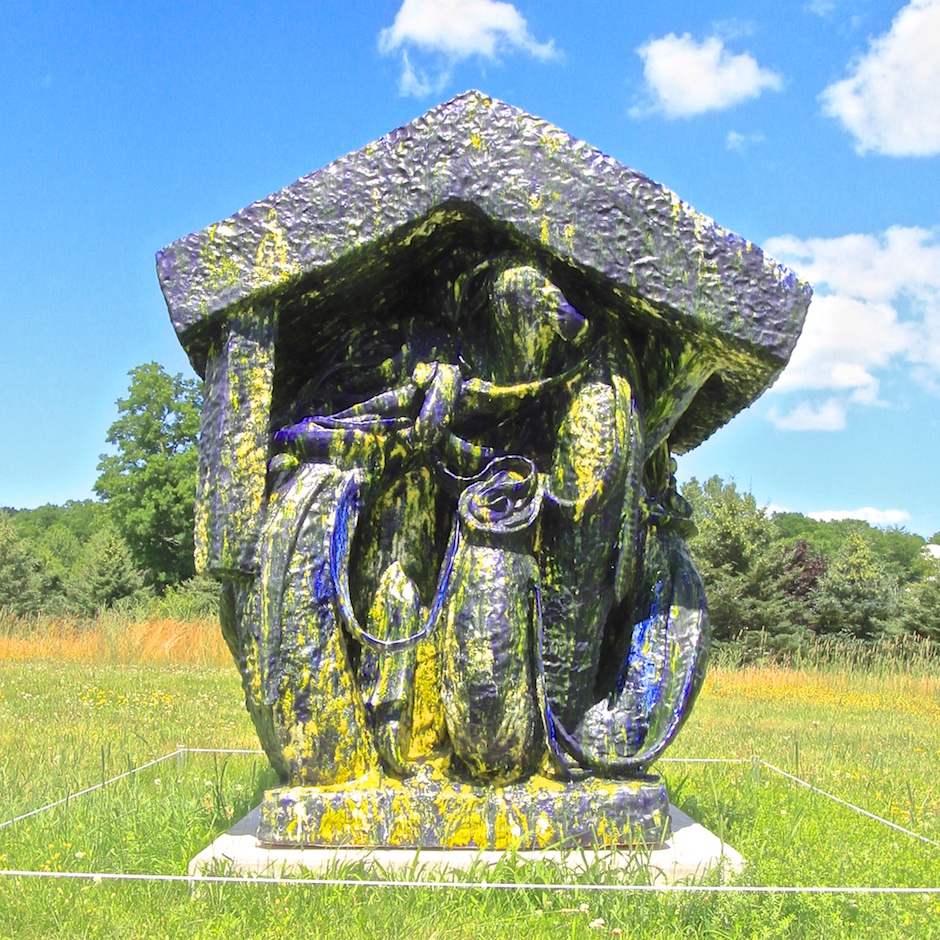
Matt Wedel, Pyre (blue), 2017. Ceramic. Approx: 91″x 79.5″x 79.5″
On View: May 27, 2017 – May 2019
~~~~~~~~~~~~~~~~~~~~~~~~~~~~~~~~~~~~~~~~~~~~
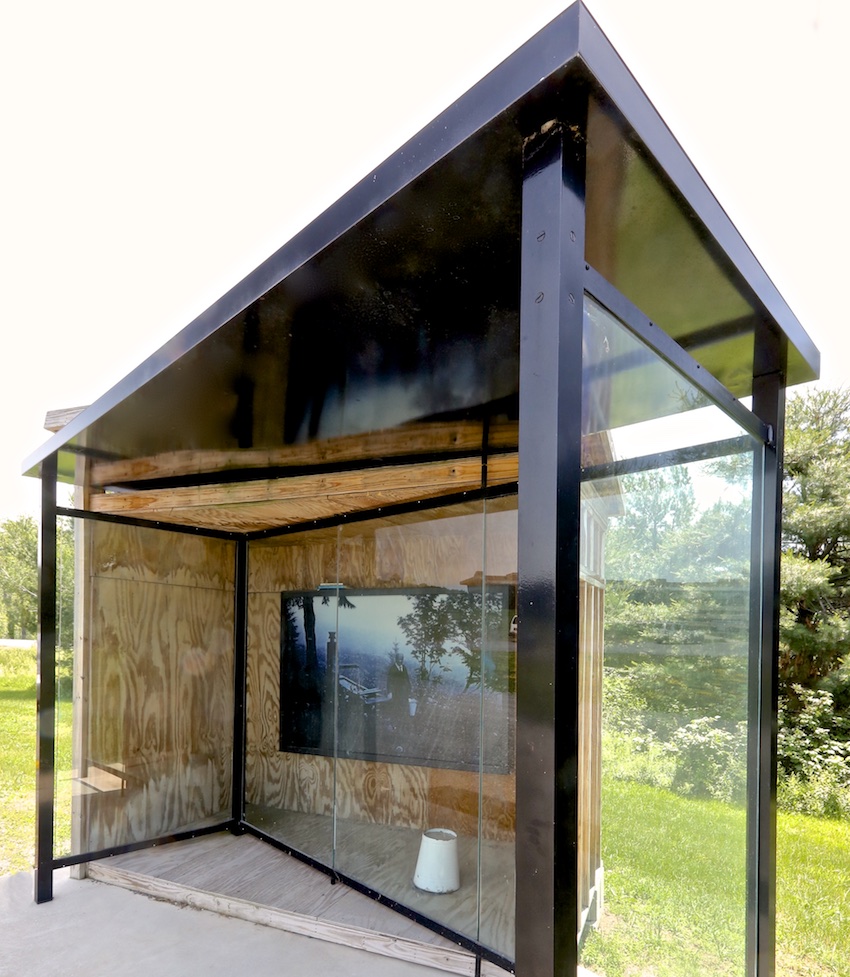
Dennis Adams, Bus Shelter XI (Heidegger), 2011, Aluminum, plexiglass, wood, enamel, fluorescent light, Duratrans
Dennis Adams is an American sculptor and conceptual artist internationally recognized for his public projects and museum installations surrounding the relationship of art and the urban environment. Through use of photography, cinema, public space, and architecture, Adam’s work explores historical and political undercurrents while addressing the process of collective amnesia. Adam’s work has been the subject of over 50 one-person exhibitions in museums and public spaces throughout North America and Europe.
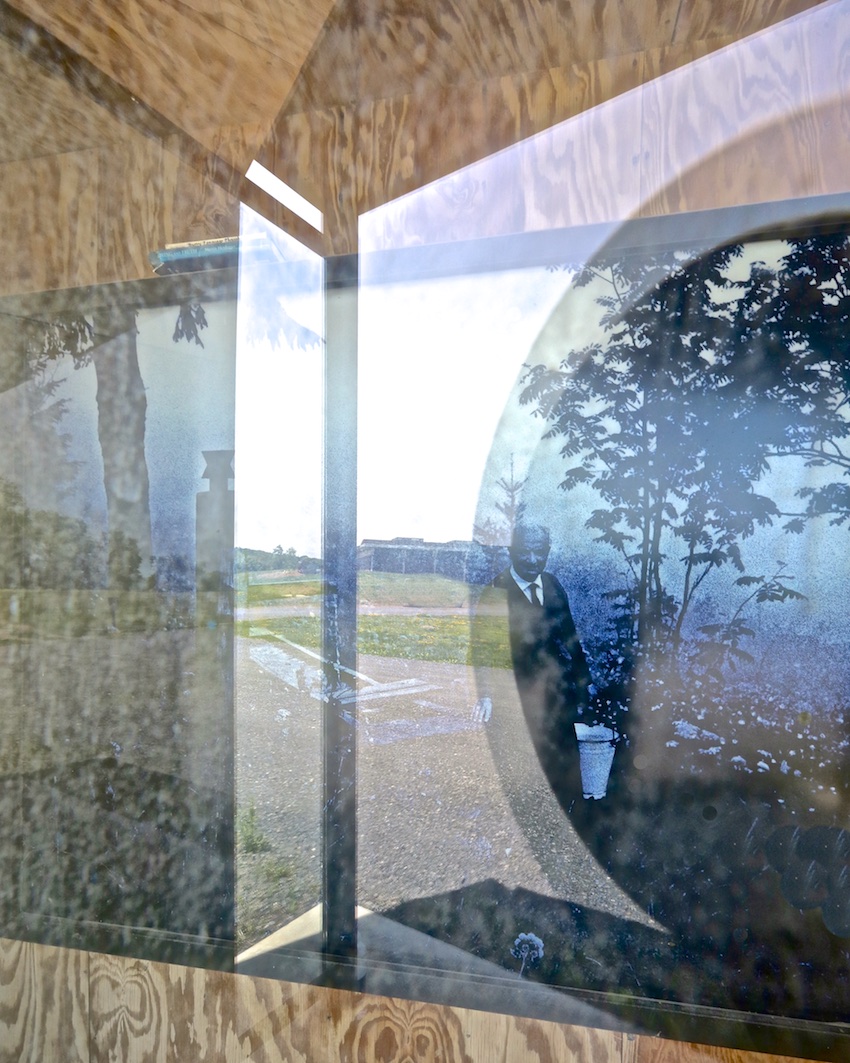
~~~~~~~~~~~~~~~~~~~~~~~~~~~~~~~~~~~~~~~~~~~~
Antoni Milkowski, Ripogenus, 1978-1982
Antoni Milkowski, Steppe, 1969
Antoni Milkowski (1935-2001) was a Minimalist sculptor. His teachers at Hunter College would include Tony Smith, Ad Reinhardt, Michael Ponce de Leon, George Sugarman, and Eugene Goossen. While a Fulbright Scholar in Warsaw in 1964-5, Milkowski created his first major, large-scale, public artwork for the First Biennale of Spatial Forms in Elbląg, Poland. This festival propagated the idea of integrating art and industry and showcased his Polish Column along with 30 other works by mostly Polish artists.
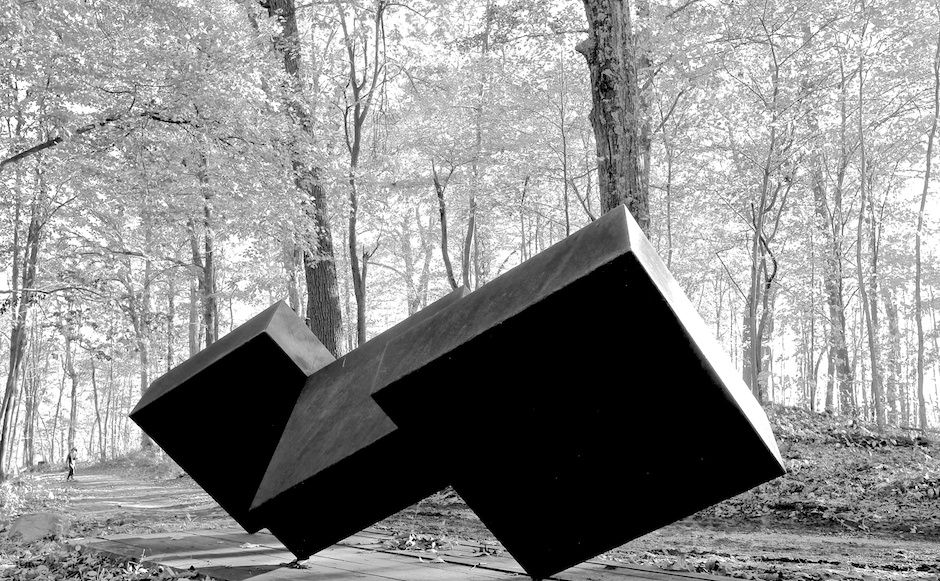
~~~~~~~~~~~~~~~~~~~~~~~~~~~~~~~~~~~~~~~~~~~~
Robert Melee, It Up, 2008
Beginning his career in video, Robert Melee (b. 1966) soon ventured to make sculptures that would explore many of the topics that he had dealt with in his moving image work, including class, obsessive behaviors, nostalgia, and humor. Melee’s work blurs the boundary between the beautiful and the grotesque, leaving viewers to wonder how the artist’s ideas developed. Melee has exhibited internationally in a wide range of public and private institutions.
~~~~~~~~~~~~~~~~~~~~~~~~~~~~~~~~~~~~~~~~~~~~

Forrest Myers, Valledor, 1969
~~~~~~~~~~~~~~~~~~~~~~~~~~~~~~~~~~~~~~~~~~~~
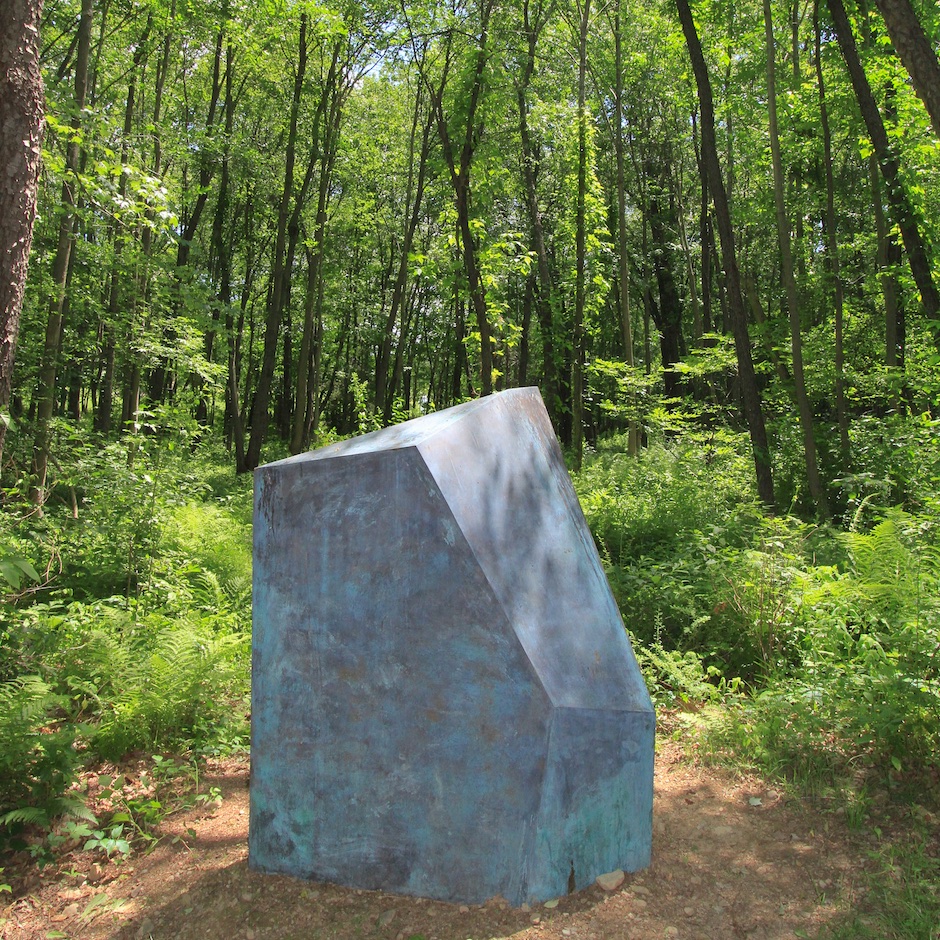
Catherine Lee: Constants, 2014
Catherine Lee has been creating large scale bronze works since the late 80’s. In time these works have evolved from wall mounted unions of two or more parts, to rigid self standing Sentinels, then the Hebrides and Sibyl series, where Lee began to truly explore three dimensional space along with her continual exploration of surface and abstract shape. In The Fields at Omi, Lee will exhibit a brand new series titled Constants.
“Constants is a reference to what we can count on, something that might show us the way, something we can trust to be there and rely upon. I wanted them to have weight enough to anchor the field but not to overpower it. The fact that each Constant changes radically, visually, as you circle around is a purposeful challenge to their constancy – until one realizes that the relationship of each facade to each other facade is really just proof of the proverbial ‘whole that is greater than the parts’, a recurring theme in my work for many years. As with many sculptures, not only mine, it’s critical to an experience of it that you can’t see opposite sides simultaneously, the closest the viewer can come is by circling around, so that you can begin to know the piece through a kind of cinematic viewing, a linear series of real time, real life mental stills that will gradually gel into a visual and emotional understanding, through time & motion. I find this fascinating, that painting will make us stand still in order to look, but sculpture must compel us move in order to be understood potent as art objects”. – Catherine Lee, 2014
~~~~~~~~~~~~~~~~~~~~~~~~~~~~~~~~~~~~~~~~~~~~
Thomas Matsuda, Purification, 2007
Thomas Matsuda’s (b. 1956) work and process stem from his growing up in the United States, apprenticeship in Japan, and interest in both Buddhist and Native American spirituality. By harnessing his spirit and energy through his sculpture, Matsuda seeks to create a synthesis between East and West. All of the materials that Matsuda uses in his work are obtained from riverbeds and forests. Matsuda’s sculptures often come into being as the direct result of a fire ritual that he considers part of the piece itself. He has created pieces for numerous temples, shrines, and communities. The artist has exhibited in major cities all over the world.
~~~~~~~~~~~~~~~~~~~~~~~~~~~~~~~~~~~~~~~~~~~~
Tom Doyle, Samhin, 2013
Tom Doyle’s (b. 1928) works demonstrate that even an object with the heaviest form can be suspended above ground as an airy, yet expressive, figure. Each sculpture, though cast in bronze, appears to levitate as it effortlessly balances on only three points. Doyle, a man once entrenched in the vibrant conversation surrounding American art in the 1950’s and ‘60’s, and inspired by the mobiles of Alexander Calder, has captured many eyes through his unique, flexing forms. Doyle has exhibited work across the U.S. and Europe.
~~~~~~~~~~~~~~~~~~~~~~~~~~~~~~~~~~~~~~~~~~~~
Philip Grausman, Susanna, 1996-1999
Philip Grausman (b.1935) is a well-acclaimed portrait sculptor. His portraits are executed on a monumental scale, and often feature the likenesses of students, family members, and acquaintances of the artist. Grausman gives life and personality to his subjects by accentuating the line and mass that defines their physiognomies, even as his works are monochromatic and de-emphasizes finer details.
~~~~~~~~~~~~~~~~~~~~~~~~~~~~~~~~~~~~~~~~~~~~
Bernar Venet, Arcs in Disorder: 4 Arcs x 5, 2000
In 1979, Bernar Venet (b.1941) began a series of wood reliefs, Arcs, Angles, Diagonals, and makes steel sculptures composed of two arcs. These lead to the project for a monumental arc on a highway. At this time, Venet produces writings about conceptual art and explores the idea of monosemy, or the quality of conveying a single, unambiguous meaning. From the 1980’s onward, Venet has created countless public sculptures, exhibited his work in numerous museums throughout the world, been the subject of a number of monographs, and been recognized by a 2011 postage stamp issued by the Post Office of the French Republic to commemorate his exhibition in Versailles.
~~~~~~~~~~~~~~~~~~~~~~~~~~~~~~~~~~~~~~~~~~~~
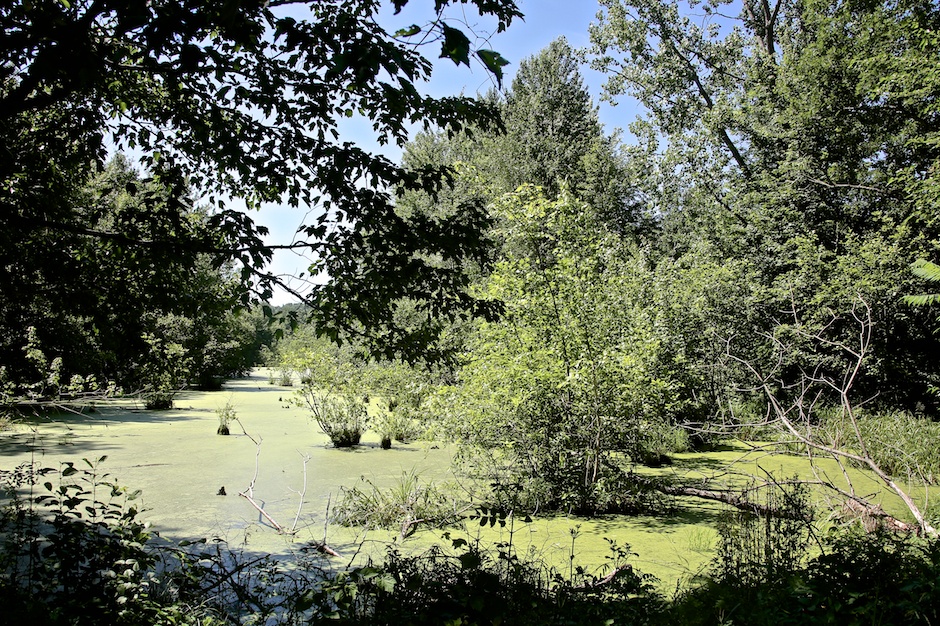
Pond at Omi International Arts Center
~~~~~~~~~~~~~~~~~~~~~~~~~~~~~~~~~~~~~~~~~~~~
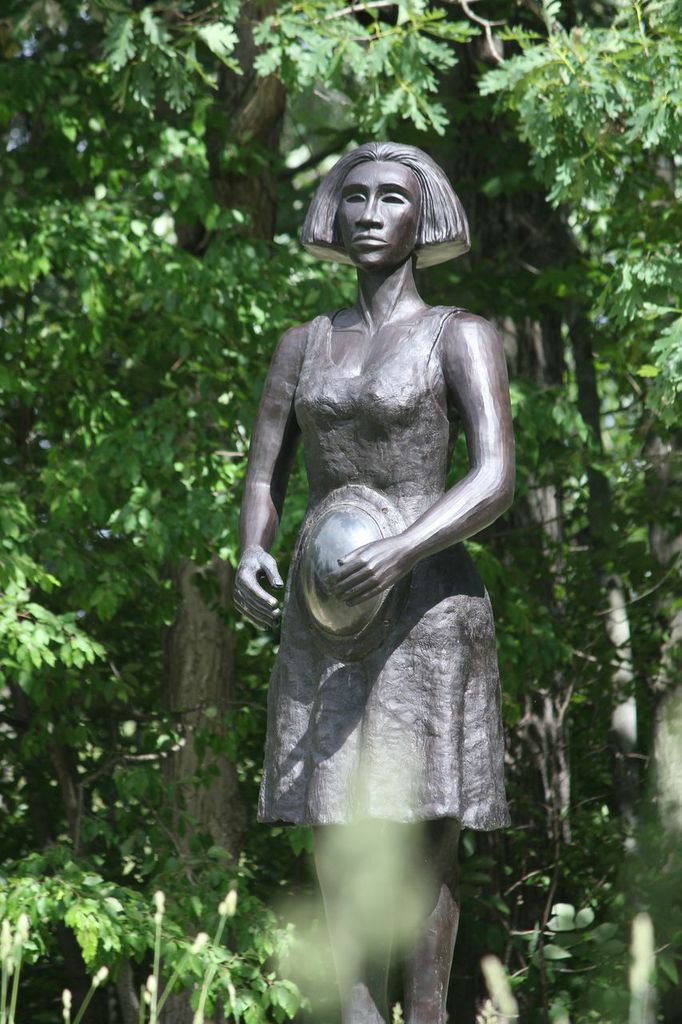
Alison Saar, Summer, 2011, cast bronze, 8 ft tall. Photos by Akemi Hiatt.
The two pieces on view in The Fields, Winter and Summer are two out of a larger series of four that Saar conceived around each season. In her own words, the work is “about, of course, the cycles of nature, but they’re also about the cycles of women—our bodies and their maturations. Additionally, the whole project also came to embody, to me, the cycle of creativity.”
 “Summer is pregnant with fireflies…I wanted her pregnancy to signify a very fertile stage in a woman’s life, but also the idea of summer, and a time of year when everything is coming to fruit. Winter looks like a stone, is petrified, and hibernating. She is curled up, in a dormant stage. When I think of that notion of mapping the chapters of creativity, she becomes this really important, overlooked part of the process: there is always this stage, after the execution of a project, when you’re just kind of down low, dormant, re-collecting yourself to start the whole process over”.
“Summer is pregnant with fireflies…I wanted her pregnancy to signify a very fertile stage in a woman’s life, but also the idea of summer, and a time of year when everything is coming to fruit. Winter looks like a stone, is petrified, and hibernating. She is curled up, in a dormant stage. When I think of that notion of mapping the chapters of creativity, she becomes this really important, overlooked part of the process: there is always this stage, after the execution of a project, when you’re just kind of down low, dormant, re-collecting yourself to start the whole process over”.
~~~~~~~~~~~~~~~~~~~~~~~~~~~~~~~~~~~~~~~~~~~~
Richard Nonas, Smoke, 2009
In 1967, Richard Nonas (b. 1936) became aware of the fact that it was possible to communicate abstract emotion directly with objects, instead of indirectly with words, and became, in the words of the Brooklyn Rail, an “unwitting but enthusiastic participant” in the New York art world of the 1970’s. Nonas was a member of the Anarchitecture Group, which aimed to critigue what they saw as the worst excesses and drawbacks of the modernist impulses of contemporaneous culture, as well as the stasis in cultural attitudes, and resistance to change, that traditional architectural education epitomized to them.
~~~~~~~~~~~~~~~~~~~~~~~~~~~~~~~~~~~~~~~~~~~~
Donald Lipski, Sallie, 1997 [Detail]
Donald Lipski (b. 1947) is well-known for his large-scale public works, and sculptural installations. In 1977, Lipski also won the first of three National Endowment for the Arts grants. He was awarded a Guggenheim Fellowship in 1988, and the Rome Prize of the American Academy in Rome in 2000.
~~~~~~~~~~~~~~~~~~~~~~~~~~~~~~~~~~~~~~~~~~~~
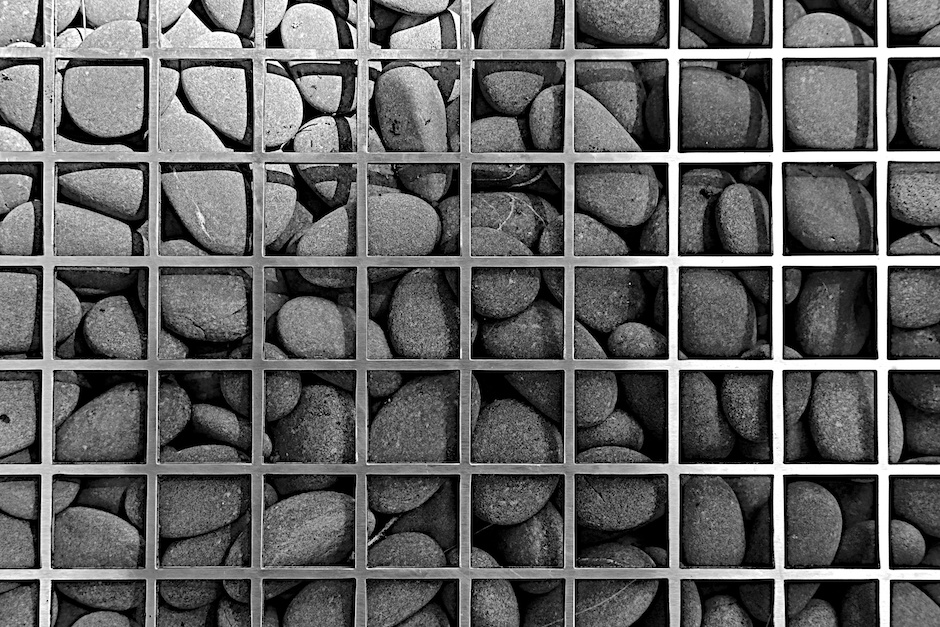
Celeste Roberge, Chaise Gabion (detail), 2009, water jet cut, gig welded stainless steel filled with river stones, 24x72x27, edition 6 of 10.
“A few summers ago, I saw a nineteenth century leather psychiatrist couch at Polly Peter’s Antique Shop in Portland, Maine. The weight and resonance of that couch obsessed me until I began the series Stacks. I was inspired by the absurd desire to embed antique sofas in thousands of pounds of dry-stacked stone in such a way that the furniture would seem like a fossil within a stone road-cut or like an archaic funerary monument extruded from the earth. Although we like to imagine that cultural artifacts, such as furniture and art, exist free of time and decay, the material conditions of the world inevitably recoup them.” — Celeste Roberge.
~~~~~~~~~~~~~~~~~~~~~~~~~~~~~~~~~~~~~~~~~~~~

Jackie Ferrara: Ribbed Dome (rebuilt), 1997
The Fields Sculpture Park is proud to present the restored sculpture by Jackie Ferrara, “Ribbed Dome, 1997“, initially installed at The Fields in 2000.
Since the 1980s, Jackie Ferrara’s work has evolved from architectural table-top constructions of interlocking lengths of wood towards public art projects referencing pyramids, courtyards, arenas, theaters, archways, loggias, wall and floor sections, passageways, pool houses and towers. Interested in mathematical systems, she uses incremental progressions to create structures. Repeated permutations of surface openings made slits of light, causing dramatic contrasts of light and shadow.
Ferrara describes her process as “creating places”. Her sources lie in architecture and landscape architecture, in graphics and design, in mathematics, cinema and theater. She looks for connections: spatial, visual, historical, environmental, and architectural while believing in a dramatic potential of the site which invites participation, a reason to stop, investigate, and absorb.
~~~~~~~~~~~~~~~~~~~~~~~~~~~~~~~~~~~~~~~~~~~~
Dina Recanati, Trees, 1989
Dina Recanati’s (b. 1928) work is inspired by the wind and harsh weather of desert climates, as well as the destruction that they cause. Her sculptural work is marked by an interest in survival and continuity. Recurring motifs include in columns that act as support systems, trees that serve as oases, and books—the relation of past experience, or repositories for stories that haven’t been written yet.
~~~~~~~~~~~~~~~~~~~~~~~~~~~~~~~~~~~~~~~~~~~~
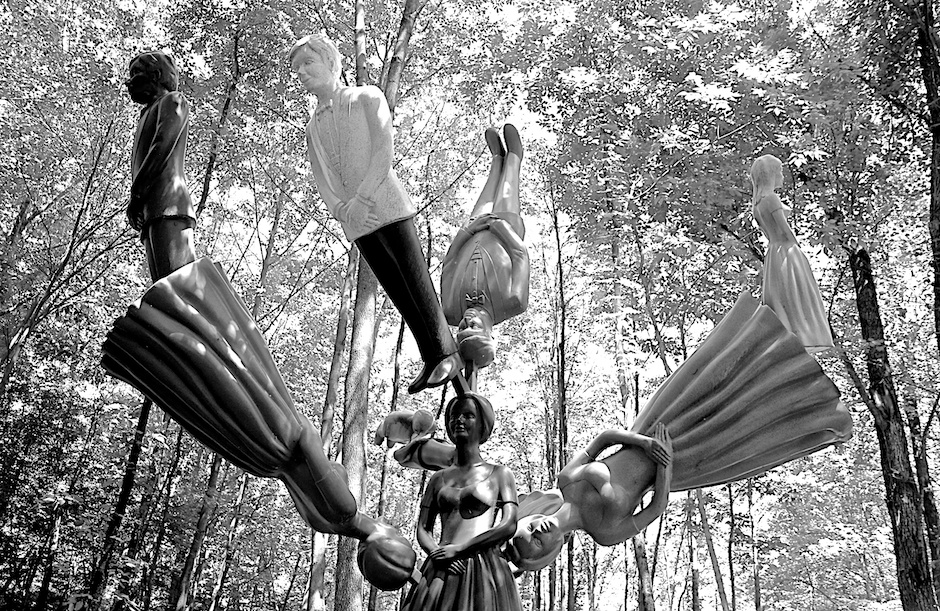
Dennis Oppenheim, Marriage Tree, 2000
~~~~~~~~~~~~~~~~~~~~~~~~~~~~~~~~~~~~~~~~~~~~
Yoandy Rizo Fiallo, Nest: Points of View, 2012
Yoandy Rizo Fiallo is an architect at O+ Studio in Havana, Cuba. In 2012, he was a recipient of a pilot grant for emerging Cuban designers, developed by the Vermont Studio Center, in partnership with Architecture Omi, the JM Kaplan Fund, and the Shelley and Donald Rubin Foundation. Fiallo participated in a 6-week residency program at the Vermont Studio Center, which culminated in the exhibition Skyline Adrift: Cuban Art and Architecture at Architecture Omi. Skyline Adrift featured the work of Fiallo, fellow grant-recipient Yilena Feitó, and two Cuban émigré artists Armando Mariño Calzado and Alexandre Arrechea.
~~~~~~~~~~~~~~~~~~~~~~~~~~~~~~~~~~~~~~~~~~~~
Oliver Kruse & Students at Peter Behrens School of Architecture, Interfere(nce), 2012
A project by Oliver Kruse (b. 1965) in collaboration with students and staff at Peter Behrens School of Architecture (Düsseldorf University of Applied Art and Sciences), Interfere inaugurates Architecture Omi’s commitment to furthering pedagogical opportunities for critical and applied art/architectural practices.
~~~~~~~~~~~~~~~~~~~~~~~~~~~~~~~~~~~~~~~~~~~~
Alice Aycock: A Simple Network of Underground Wells and Tunnels, 2012, concrete
block, wood, earth, approx. 28’ wide x 50’ long x 9’ deep.
A reconstruction of an iconic piece, Alice Aycock (b. 1946) describes the work as “a subterranean network of passages set up for the purpose of operating below the surface of the earth.” creating an all-encompassing experience of transitioning from darkness to light. Her work, like much of what is frequently grouped under the term “earthworks,” is a hybrid of sculpture, architecture, and landscape.
~~~~~~~~~~~~~~~~~~~~~~~~~~~~~~~~~~~~~~~~~~~~
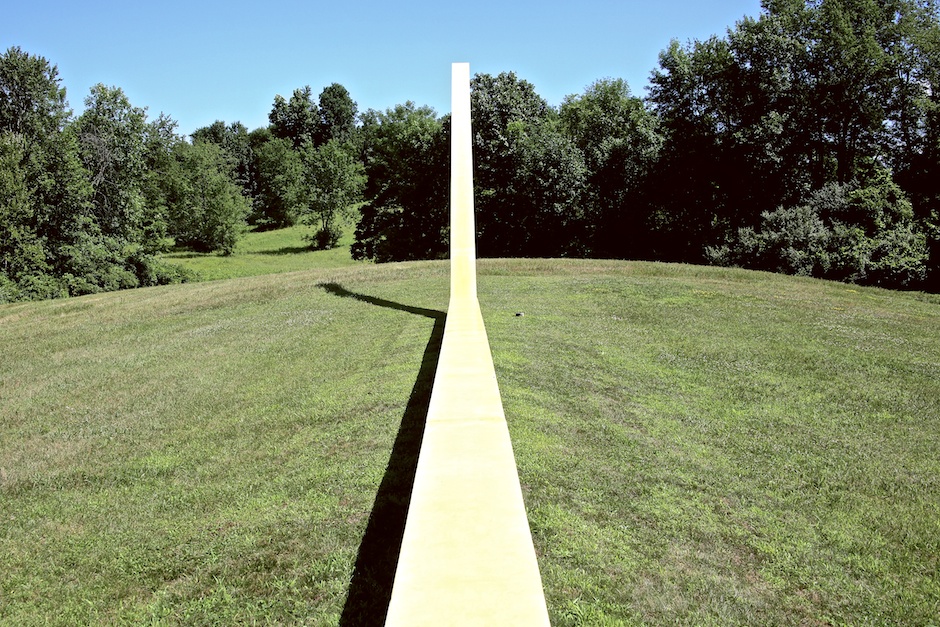
Robert Grosvenor, Untitled, 1968.
Simple and bold, this piece appears in the landscape as a origin-less object. Robert Grosvenor (b. 1937) work has been featured world-wide, his exhibitions setting a new definition for minimalism in the 1960’s – this minimalist cantilevered piece stands as a landmark in his artistic progression.
================================================================================
~~~~~~~~~~~~~~~~~~~~~~~~~ ARCHIVE ~~~~~~~~~~~~~~~~~~~~~~~~~
Art previously exhibited but no longer at site.
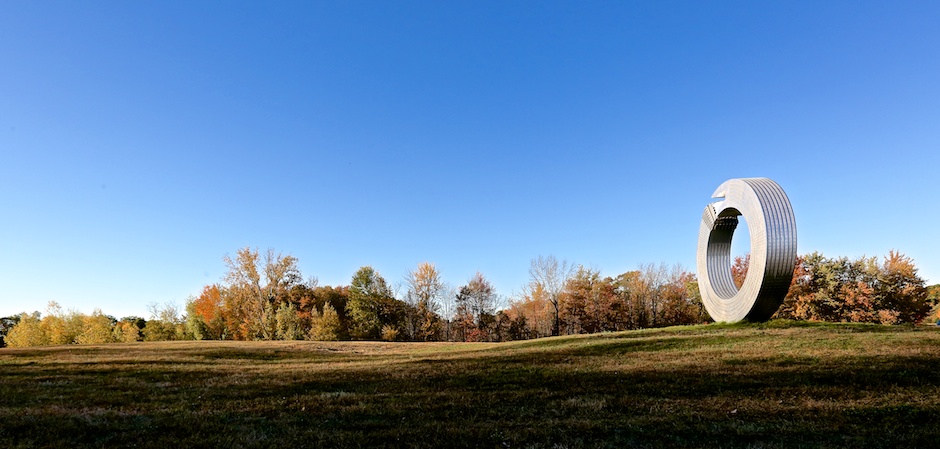
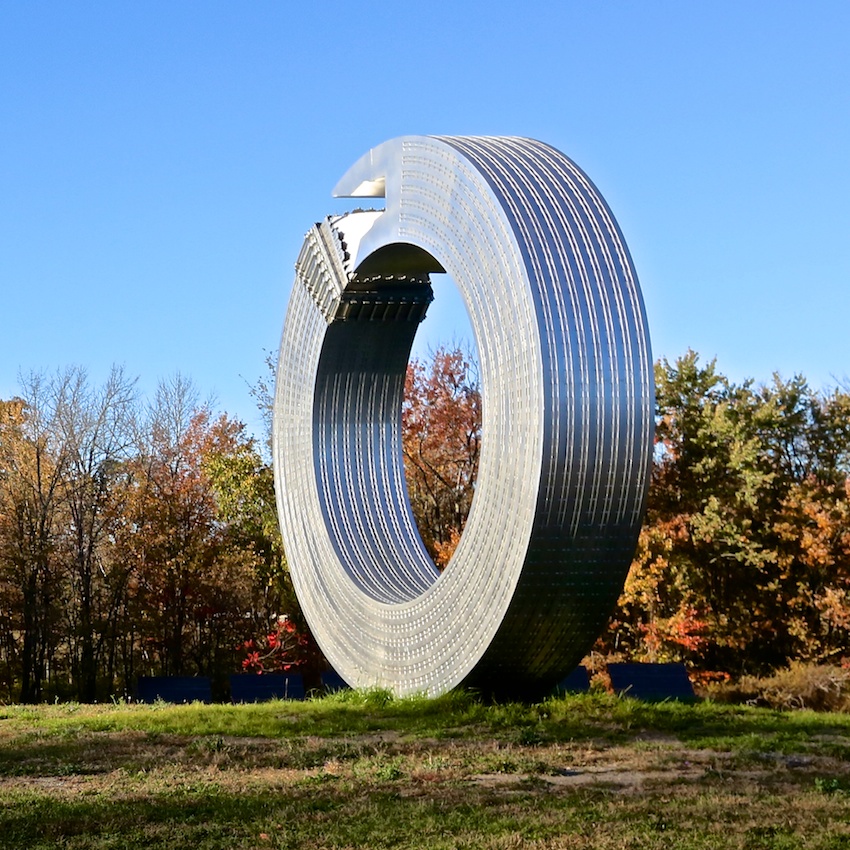
Alexandre Arrechea, Helmsley, 2013, steel, 14 3/4 x 14 ½ x 2 5/8 feet
Helmsley by Alexandre Arrechea comes from “No Limits”, a public art exhibition. The series of steel sculptures were on view in Summer 2013 along the Park Avenue Median in New York City. Arrechea playfully reinterprets buildings that defined the city and Park Avenue and each piece in that exhibition was based loosely on a New York architectural landmark: in this case, the Helmsley Building on Park Avenue and East 45th Street.
The 15-foot sculpture pays homage to the 35-story building but is equally recognizable as a snake eating its own tail. The Cuban artist has spoken of the Ouroboros myth: “It’s like a city that devours itself. That has always been my first vision of New York.”
“It’s kind of creating my vision of a parallel city by bending the rules,” Mr. Arrechea said. “These buildings are a like new calligraphy that creates a link between architecture and the human condition, and the idea of failure and success. I wanted to make the statement that we have the ability to transform our surroundings.”
Alexandre Arrechea graduated from the Instituto Superior de Arte (ISA) in Havana in 1994 and was a founding member of the collective Los Carpinteros (1994-2003).
Helmsley by Alexandre Arrechea appears courtesy of Magnan Metz.
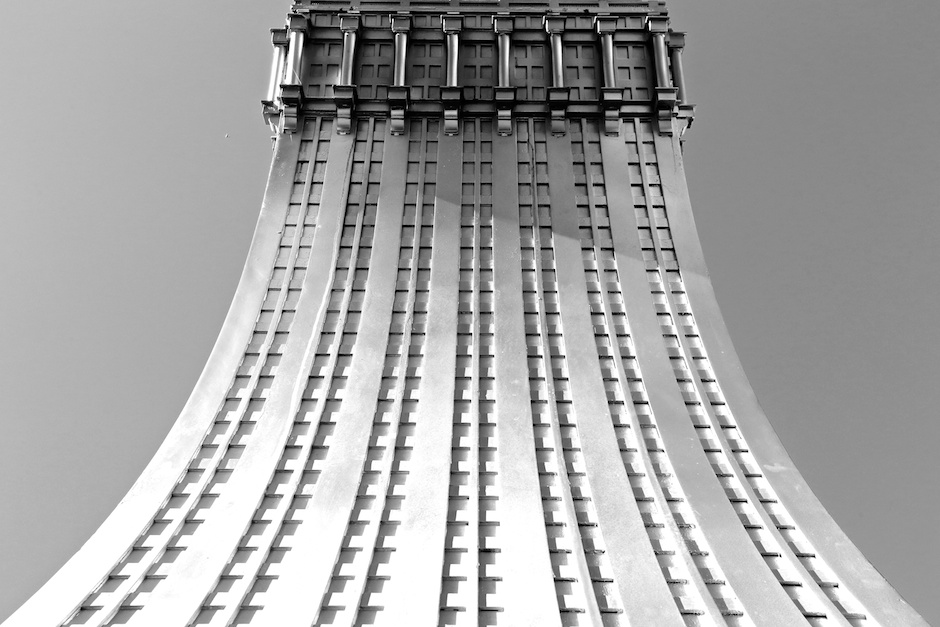
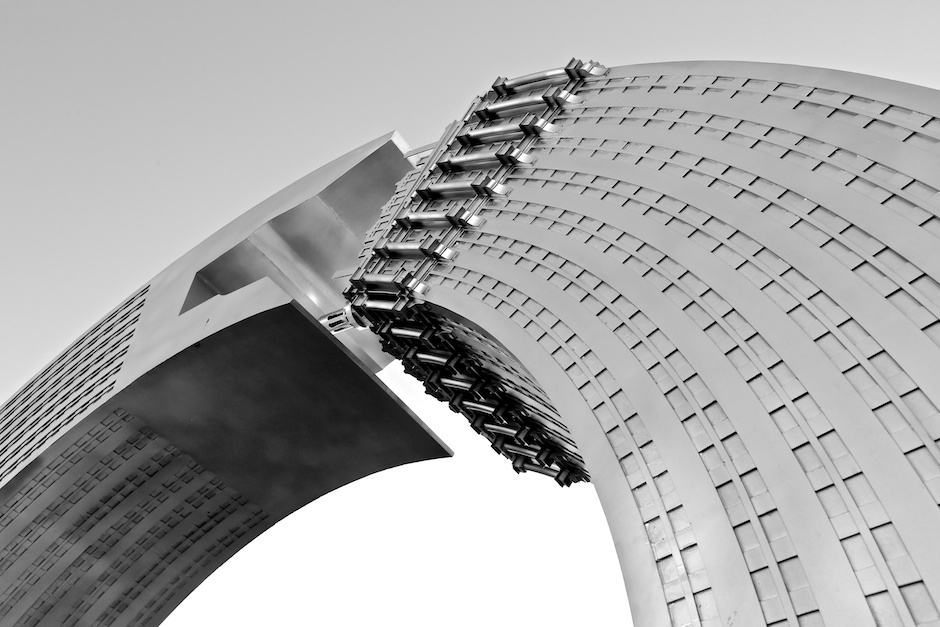
————————————
Dimitri Hadzi, Thermopylae, 1968
Dimitri Hadzi’s (1921-2006) semi-abstract work is characterized by his use of long, sinuous forms that would evoke the limbs of people and animals, and its rootedness in a lifelong interest in mythology and history. Thermopylae is named after the battle fought in 480 B.C. between Persian troops under King Xerxes I and an alliance of Greek city-states. Hadzi has cited John F. Kennedy’s Profiles in Courage, which features the stories of eight U.S. senators who remained committed to their ideals in spite of great opposition, as a source of inspiration for the sculpture.
———————————-
Mel Kendrick, jack #3, 2011
From the beginning of his career as a sculptor Mel Kendrick (b. 1949) has developed a style of piecing together fragments of wood to create works that twist and rotate in engaging compositions of positive and negative space. The sculptures in Kendrick’s 2011 series, jacks, are bold, architectonic pieces which resemble the children’s game. The sculptures were made of cast concrete using hot-wire techniques to carve large chunks of Styrofoam molds, which were then filled with alternating black and white layers of concrete.
~~~~~~~~~~~~~~~~~~~~~~~~~~~~~~~~~~~
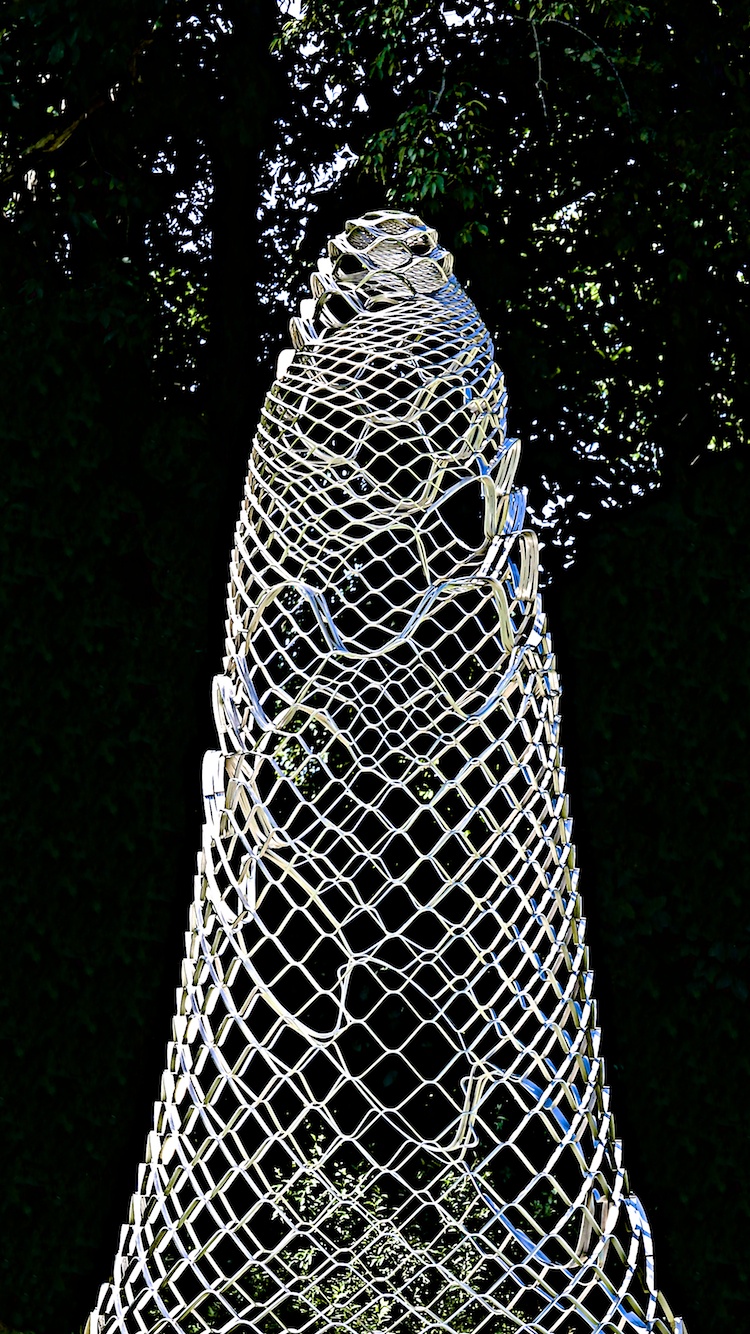
Dr. Haresh Lalvani, X-TOWER, 2014, stainless steel
Artist, scientist, architect, and Professor at Pratt Institute Dr. Haresh Lalvani creates aesthetically stunning sculptures derived from natural designs, generative principles and mathematical codes.
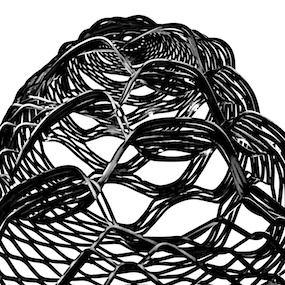 For over 30 years, Lalvani, who specializes in morphology, has researched shape codes akin to our own genetic DNA makeup. He’s developed new computational approaches based on genomic and coding methods that allow forms to self-generate – a technology that has great potential in the field of industrial design. Lalvani works with renowned metal fabricator Milgo Bufkin – who has created for leading sculptors including Richard Serra, Robert Indiana, Donald Judd, Jeff Koons, Sol Lewitt and Matthew Barney to create striking sculptures that also happen to pose questions about the way we design, fabricate, and assemble our built environment.
For over 30 years, Lalvani, who specializes in morphology, has researched shape codes akin to our own genetic DNA makeup. He’s developed new computational approaches based on genomic and coding methods that allow forms to self-generate – a technology that has great potential in the field of industrial design. Lalvani works with renowned metal fabricator Milgo Bufkin – who has created for leading sculptors including Richard Serra, Robert Indiana, Donald Judd, Jeff Koons, Sol Lewitt and Matthew Barney to create striking sculptures that also happen to pose questions about the way we design, fabricate, and assemble our built environment.
Dr. Haresh Lalvani is a tenured professor of Architecture at Pratt Institute where he is also the co-director of the Center for Experimental Structures. His work has been supported by NASA, NYSTAR, NEA, and the Graham Foundation, among others, and he received the Pioneers’ Award from the Space Structures Research Center, University of Surrey, UK.
__________________________________________________________________________________
Brian Brush, Omi Rock Pavilion, 2013
Omi Rock Pavilion is a large faceted structure situated on a hilltop overlooking stunning views of the Catskills which operates at the intersection of art and architecture, tying in the experience of viewing the landscape with being of the landscape. Omi Rock Pavilion is by Brian Brush, Adjunct Assistant Professor at Columbia University GSAPP and founding partner of noted design firm E/B Office. His work focuses on the intersection of architecture and art, specifically through the manifestation of information in form, space, and material.
The Fields Sculpture Park and
Charles B. Benenson Visitors Center and Café
Omi International Arts Center
(518) 392-4747
www.artomi.org
Residency Programs Offered at OMI International Arts Center
Omi International Arts Center has four distinct residency programs. Through a competitive jury process, residents are chosen, invited to attend at no cost to themsleves, except travel. Abundant, catered meals and comfortable, beautiul lodgings are provided in a scenic location in Columbia County, New York. Omi is two hours north of New York City by train.
Art Omi International Artists Residency invites thirty artists from around the world every July for a four week residency. Writers Omi at Ledig House sponsors forty writers and translators from around the world for up to two months each year. Music Omi brings together twelve to fifteen musician-composers from around the world in August for three weeks. Dance Omi International Dance Collective brings together ten dancers from around the world for three weeks in late August.
____________________________________________________________________________________________________________________
Photographs copyright Jeff Heatley, except photographs of Aycock, and as noted, which were supplied courtesy of OMI International Arts Center. Copy/captions courtesy of OMI International Arts Center.
_______________________________________________

